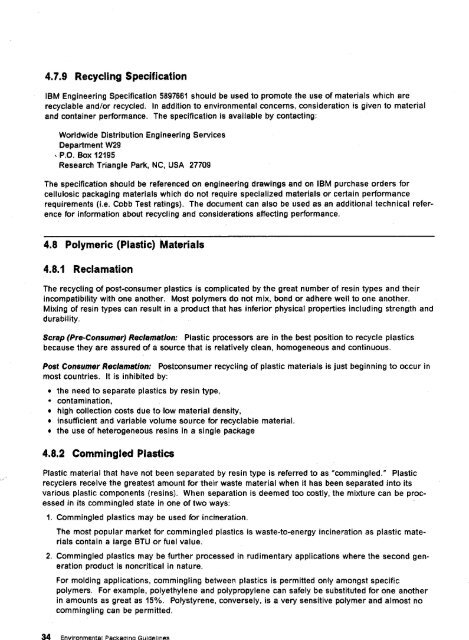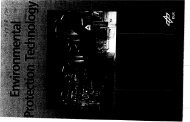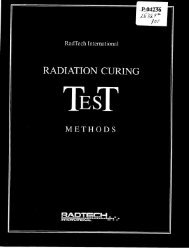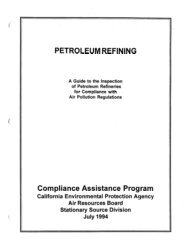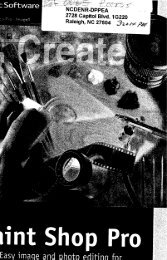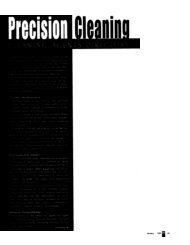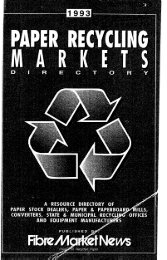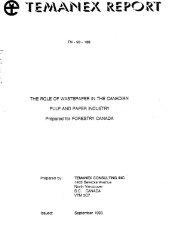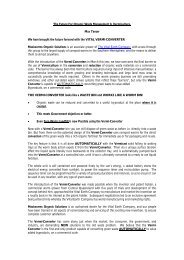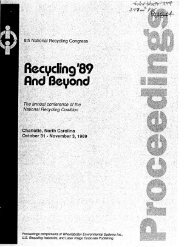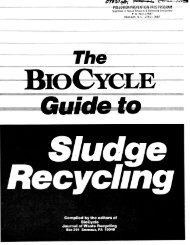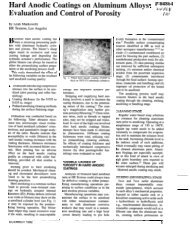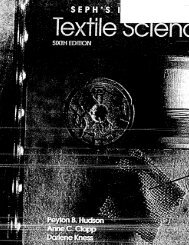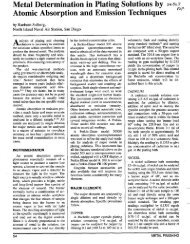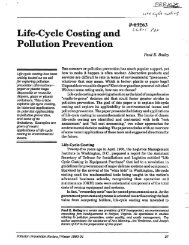Electronic Parts/Guidelines - infoHouse
Electronic Parts/Guidelines - infoHouse
Electronic Parts/Guidelines - infoHouse
Create successful ePaper yourself
Turn your PDF publications into a flip-book with our unique Google optimized e-Paper software.
4.7.9 Recycling Specification<br />
IBM Engineering Specification 5897661 should be used to promote the use of materials which are<br />
recyclable and/or recycled. In addition to environmental concerns, consideration is given to material<br />
and container performance. The specification is available by contacting:<br />
Worldwide Distribution Engineering Services<br />
Department W29<br />
P.O. BOX 12195<br />
Research Triangle Park, NC, USA 27709<br />
The specification should be referenced on engineering drawings and on IBM purchase orders for<br />
cellulosic packaging materials which do not require specialized materials or certain performance<br />
requirements (Le. Cobb Test ratings). The document can also be used as an additional technical refer-<br />
ence for information about recycling and considerations affecting performance.<br />
4.8 Polymeric (Plastic) Materials<br />
4.8.1 Reclamation<br />
The recycling of post-consumer plastics is complicated by the great number of resin types and their<br />
incompatibility with one another. Most polymers do not mix, bond or adhere well to one another.<br />
MiXing of resin types can result in a product that has inferior physical properties including strength and<br />
durability.<br />
Scrap (Pre-Consumer) Reclamation: Plastic processors are in the best position to recycle plastics<br />
because they are assured of a source that is relatively clean, homogeneous and continuous.<br />
Post Consumer Reclamation: Postconsumer recycling of plastic materials is just beginning to occur in<br />
most countries. It is inhibited by:<br />
the need to separate plastics by resin type,<br />
- contamination,<br />
high collection costs due to low material density,<br />
insufficient and variable volume source for recyclable material.<br />
the use of heterogeneous resins in a single package<br />
4.8.2 Commingled Plastics<br />
Plastic material that have not been separated by resin type is referred to as "C0n"ngled." Plastic<br />
recyclers receive the greatest amount for their waste material when it has been separated into its<br />
various plastic components (resins). When separation is deemed too costly, the mixture can be proc-<br />
essed in its commingled state in one of two ways:<br />
I. cm"ngled plastics may be used for incineration.<br />
The most popular market for commingled plastics is waste-to-energy incineration as plastic mate-<br />
rials contain a large BTU or fuel value.<br />
2. Commingled plastics may be further processed in rudimentary applications where the second generation<br />
product is noncritical in nature.<br />
For molding applications, commingling between plastics is permitted only amongst specific<br />
polymers. For example, polyethylene and polypropylene can safely be substituted for one another<br />
in amounts as great as 15%. Polystyrene, conversely, is a very sensitive polymer and almost no<br />
commingling can be permitted.<br />
34 Environmental Packaoino <strong>Guidelines</strong>


